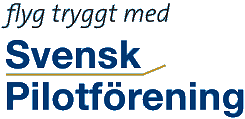Where are the pilots of tomorrow?We all agree that European aviation needs skilled, talented flight crews to underpin the growing aviation sector. But where to find and how to attract them? The question is even more pressing now that airlines have woken up to the fact that the pilots queuing at their doorsteps, coming from varied supply sources, may not always be up to the airline quality standards.
The solution – as ECA outlines in a recent position paper – will require sweeping changes: a different approach to candidate screening, improving the attractiveness of the profession and its working conditions, and bringing pilot training into the 21st century. The backbone of the future European pilot body is at primary and secondary school as we speak. It is with those young people that the industry should seek early-stage engagement.
Reaching out to children in schools is a sure way of promoting the pilot career and creating enthusiasm and motivation. Children who have no relatives working in aviation would rarely consider it as a dream job or a viable career option. This is why having a presentation of the opportunities in the aviation sector early on would help them – boys and girls – and their parents to plan ahead and consider a flying job.
Another avenue is to organise summer camps to bring the aviation ‘bug’ to a new audience in a fun and engaging way.
All stakeholders have a role to play: first & foremost airlines but also national authorities, transport departments, and professional associations. They can all contribute to programmes at schools, summer camps, contests, events or career fairs to introduce children to the aviation environment. For pilot organisations, presence at such events is a must in order to provide an objective storyline to young people. They can provide a hands-on, realistic and non-commercially driven picture of the job opportunities, study costs and flight schools in their respective countries. Pilot organisations are also best placed to describe the every-day working environment and demands of the profession.
It is through such programmes and information days that the aviation industry could and should inspire people from different backgrounds. The lack of diversity and different role models in aviation is another key aspect. This results in the perception that the pilot career is only within reach for the white, wealthy male, thereby holding back many potential good candidates – such as females, ethnic minorities, etc. Untapping this potential will improve both the amount and quality of applicants to the profession. Early intervention is the right way to go, explaining the study choices that would help, and support capable and motivated candidates.
Another obvious place to look for the future pilots are flying and glider clubs. Early flying experience in gliders has been identified as an extremely valuable foundation for pilot training, motivation and airmanship.
All these initiatives are ambitious but they are also achievable. Should the industry want to live up to its forward-looking reputation, such programmes would be considered as a logical investment and be a core part of the long-term vision of any airline and any aviation stakeholder.
Publicerad 2020-02-10 av Rebecca
|


